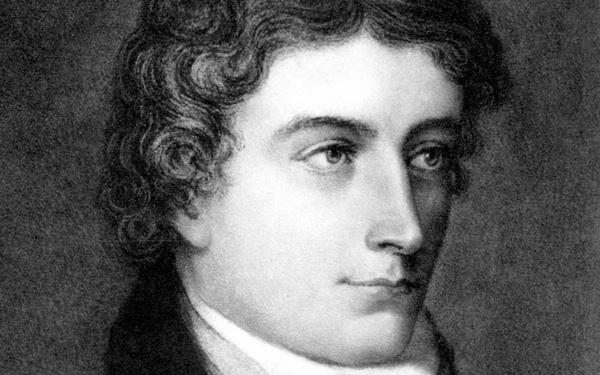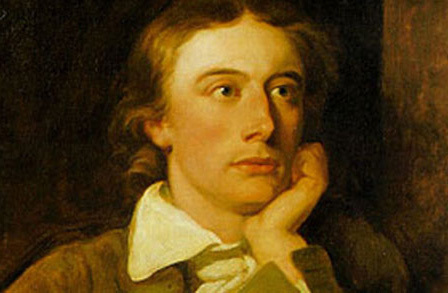About James Whitcomb Riley:
Known as “Children’s poet” and also as the “Hoosier Poet” for his children’s poetry and dialect works, James Whitcomb Riley was one of the bestselling authors of his time. Born in 1849, Riley went on to become one of the most loved poets of all time. During his career he wrote thousands of poems. His most notable works include “Little Orphant Annie” and “The Raggedy man”. Riley’s poems are full of sentiment. They are written in traditional form and in Indiana’s dialect (hence the name “Hoosier Poet”). Riley died in 1916 of a stroke. His death shocked the entire nation and more than 35000 people filed past his casket.
About Sleep:
‘Sleep’ is a sonnet written by James Whitcomb Riley. It is vivid in its imagery and numerous in its interpretations.
Setting of Sleep:
The poem speaks of enchanted streams and violent seas. But the true setting of the poem is inside God’s dreams.
Poetic Devices in Sleep:
Imagery:
There is a lot of imagery in play here. It is first encountered in description of the streams, where the satyrs sing. The next imagery is encountered in the description of His love towards the speaker. The love is then personified and given more imagery
Rhyme:
The rhyme scheme of the poem is ABBAABBACDCDCC. The rhyme scheme and the number of lines of verse make this a sonnet, but with some setbacks. More about this in the analysis section.
Personification:
The sea is said to swallow of the speaker and licking its wet lips over him. The second part is personification.
Simile:
The up and down movements of the hooves of the satyrs are said to be like the movements of the tiny particles visible in sunlight beams. The speaker says he is like an Argonaut, one who is in quest of something dangerous but rewarding.
Foreshadowing:
The poem being a sonnet has a ‘turn’ in it. This comes in form of the speaker comparing himself to an Argonaut. The danger he says is present in that comparison materializes in the last two lines of the poem.
Summary of Sleep:
The speaker of the poem talks to God in this poem. He says that He thinks of the speaker in a semi-awake state. As a result, the speaker drifts in His dreams. The speaker’s soul is cleansed in streams where satyrs play music. To the speaker, this drowsy state seems like deep love and he willingly sinks in to it. The love of Him captures him so such that he falls into sleep.
Analysis of Sleep:
The speaker begins by calling God drowsy. His eyes are blurred and only half awake. In this state, He thinks of the speaker. Now the speaker says all of this because he is in someone dreams and whose dreams can be so vivid, so powerful and so real than His?
The speaker then says, ‘I lave my soul’. Lave means wash. The speaker’s soul is cleansed in streams which are enchanted. He then uses imagery to describe the stream and its surrounding. We see by his description a stream in front us, a magical one. And around the edges of this stream, we see satyrs, a half-human half-goat life form. We see them, playing pipes in a joyful mood getting drunk on the melody of their own music. We see them, now sitting on the brinks of the streams, dangling their hooves over the edges, moving them up and down. The speaker compares this to the way the tiny particles dance in the sunlight beams, which we usually see falling through our windows. This here is a simile. The description is so vivid, that we see the joy and hear the melody while reading the poem.
The speaker then goes on to speak on the languor, the inactiveness of Him. He describes the inactive state as love, which is ocean deep. And he sinks in that love willingly, ‘like some fond Argonaut’. Now Argonaut means a small floating octopus, but keeping in mind the time this poem was written in it can be safely assumed that it means a person who is in quest of something dangerous but rewarding.
There is a small foreshadowing here. The speaker describes himself as an Argonaut meaning there is danger involved in what he was doing. Till now, the poem was a described a happy and dreamy scene. But now there is a slight change in the tone.
The speaker continues by telling of the reasons he was willing to sink in His love so willingly. He personifies the love of Him here. The speakers say that love had wooing eyes looking at him, it had siren-arms that coiled around his neck and its kisses were divine.
Now we see another small foreshadowing of the events to come when the speaker uses the phrase ‘siren’ in relation to the arms. Sirens are mythical creatures that lure sailors by their sweet voice and songs, and eat them. The speaker says the same of the arms. They are beautiful but deadly.
The foreshadowing of danger gets its form in the last two lines. The peaceful and happy scenery is gone. The speaker now sees the heavens above him move abruptly and violently. And he looks down to see the sea swallow him whole.
There is again some personification here when he says the sea licked its wet lips over him.
The poem which began on a peaceful and dreamy note had its first foreshadowing in the ninth line and climaxed in a violent scene.
This is a classic example of a sonnet. In fact, this poem is a sonnet. It has fourteen lines. It has an end rhyme scheme. It has two parts in it, one the peaceful and happy part, described in the first eight lines and then it had the anticipating-turned-violent part described in the next six lines. Sonnets usually have this form where a turn comes after 8 lines of verse. The only thing which stops this particular sonnet from being classified decisively is the rhyme scheme. The rhyme scheme in the first eight lines (ABBAABBA) is a standard one, but it deviates in the next part (CDCDCC).
The meaning of the poem can be taken in this way. God is all powerful. Whatever He wishes, He just has to think of it and it will be done. This is seen from the poem when He first thought of the speaker and the speaker experiences joy and peace. His soul is cleansed and he could hear music. But then His thoughts make the speaker swallowed by the sea; and all this in His half-awake state, not really focusing on the speaker. God’s power is shown here, and by demonstrating what all He could do in his half awaken, we are left awed and a little scared at what He could when he really focuses.
Of course, different readers can interpret this poem in different ways. The happiness and tragedies of life can be attributed to the drifting thoughts of a half-awoken God; implying that the struggles of humans are futile and all life is but an illusion. It can be taken as a demonstration of the weakness of humans (the speaker knows that there is danger present but in front of the overwhelming love there was nothing he could do). It can be taken in many others ways too. That is the beauty of poems. They are a mirror, reflecting different things to different readers.
Central Idea of Sleep:
The central idea of the poem is to show God’s power and God’s love for humans, and how that love could either make the human or break him, and in the process showing how helpless he is in the wake of this.
Tone of Sleep:
In the start, the tone of the poem is dreamy and hopeful. In God’s presence, one’s soul is cleansed, one’s sins are washed away and one experiences joy and peace.
In the middle, this tone changes to one of anticipation and foreshadowing. The love is turned to something beautiful but dangerous.
At the end, the tone becomes violent. The heavens become violent and the sea swallows the speaker.
Conclusion
With the help of this poem, James Whitcomb Riley shows the readers exactly what He can do; grant salvation or destroy.
Contributor: Uttej Reddy
Some online learning platforms provide certifications, while others are designed to simply grow your skills in your personal and professional life. Including Masterclass and Coursera, here are our recommendations for the best online learning platforms you can sign up for today.
The 7 Best Online Learning Platforms of 2022
- Best Overall: Coursera
- Best for Niche Topics: Udemy
- Best for Creative Fields: Skillshare
- Best for Celebrity Lessons: MasterClass
- Best for STEM: EdX
- Best for Career Building: Udacity
- Best for Data Learning: Pluralsight














